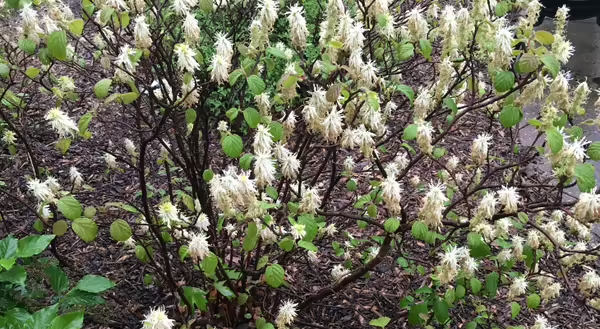
When creating a landscape, shrubs make up a large portion of the design. Shrubs are a great way to start building the blue print and creating a framework in you landscape design. Most landscapers plant them in groups and always account for mature size rather than trying to control size with pruning. Here are some tips to add more shrubs and or upstate existing plantings in your landscape this year.
-
When planting, cut four vertical slits in the root ball of the plant, one inch deep. If your shrub has lots of matted circling roots and little soil, shave one inch off of all the sides and bottom of root ball with a handsaw. This practice can be the difference between thriving and death.
-
Watering is the number one reason a new shrub planting will fail. You must water 1 inch of water per week if there isn’t sufficient rainfall. A great way to water is drip irrigation or turning on the water hose, placing at the base of the shrub and allowing it to slowly drip for one hour. A bucket with small holes in the bottom could be another option. Even shrubs that boast drought tolerance have a two to three year establishment period before they can withstand the late season droughts we have in Illinois.
-
You must water and mulch evergreen shrubs into the winter months because their needles are still photosynthesizing. Fellow Horticulture educator, Chris Enroth says “Frozen soil is like a drought for an evergreen.”
-
When pruning shrubs back for improved flowering, prune spring bloomers (bloom before July 1) immediately after flowering. These shrubs are blooming on old wood, meaning the flower buds were developed in the previous summer and fall months, such as lilac. Shrubs that bloom after July 1 develop flower buds on new wood and can be pruned in late winter to early spring, like Rose of Sharon.
-
If you have a gangly, ugly deciduous shrub, cut all the branches off to 6 inches from the ground. This is called rejuvenation pruning, and new growth will follow during the upcoming growing season.
-
When pruning evergreens, do not cut into areas where there are no needles. This is called the dead zone and it won’t grow back.
-
When creating hedges, leave the bottom wider than the top so that the lower foliage receives sunlight and won’t die out.
-
Opt for gardener’s favorite tough shrubs like dwarf witchhazel (Fothergilla gardenia), black chokeberry (Aronia melanocarpa), virginia sweetspire (Itea virginica) inkberry (Ilex glabra). All these shrubs can grow in full sun to part sun in the afternoon.
However, dwarf witchhazel is one of the few shrubs that is content growing in shady growing conditions. A 2- to 3-foot shrub that blooms fragrant, small, white whorled flowers in April or May, followed by a neat compact shrub, and ending the season in an explosion of brilliant yellow, orange and red fall color. ‘Mt. Airy’ is a hybrid that grows taller (3 to 6 feet) with glossy leaves. It has eye-catching clusters of fragrant white flowers in May, followed by black berries that are edible. It ends the season with a vibrant purple-red fall color that is aided by the glossy leaves. It is a must have shrub for backyard birders.
Virgina Sweetspire is a spreading shrub that grows 3 to 4 feet tall. It has a long floral display of drooping fragrant white flowers. The fall color is red, orange, and gold, and leaves stay on the plant well into winter. ‘Henry Garnet’ has larger flowers and better fall color.
Inkberry is a 5 to 8 foot broad leaf evergreen that blooms in May. These flowers are not showy but very attractive to bees. Berry drupes are produced on female plants so at least one male must be included in group for pollination. This shrub is a great replacement for boxwood. ‘Gem box’ is dense, dwarf (24-36 inches) shrub that presents red tips in the spring flush of growth.
